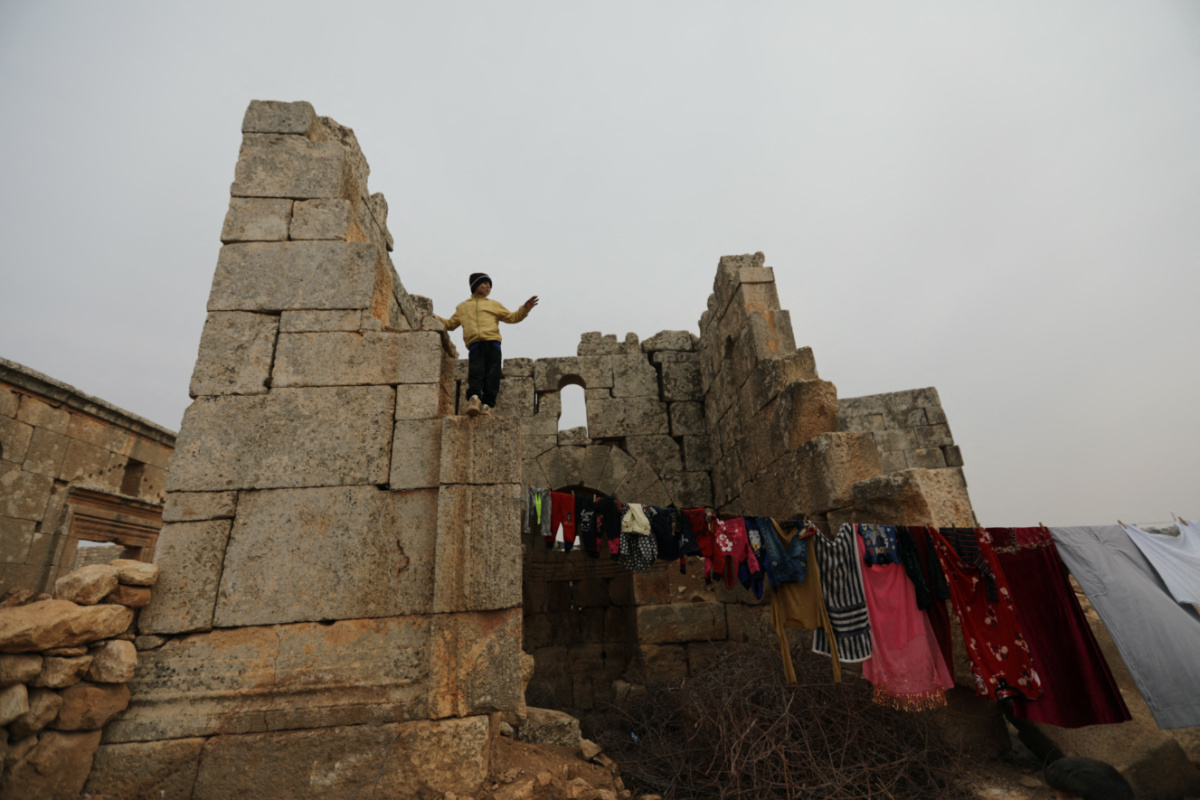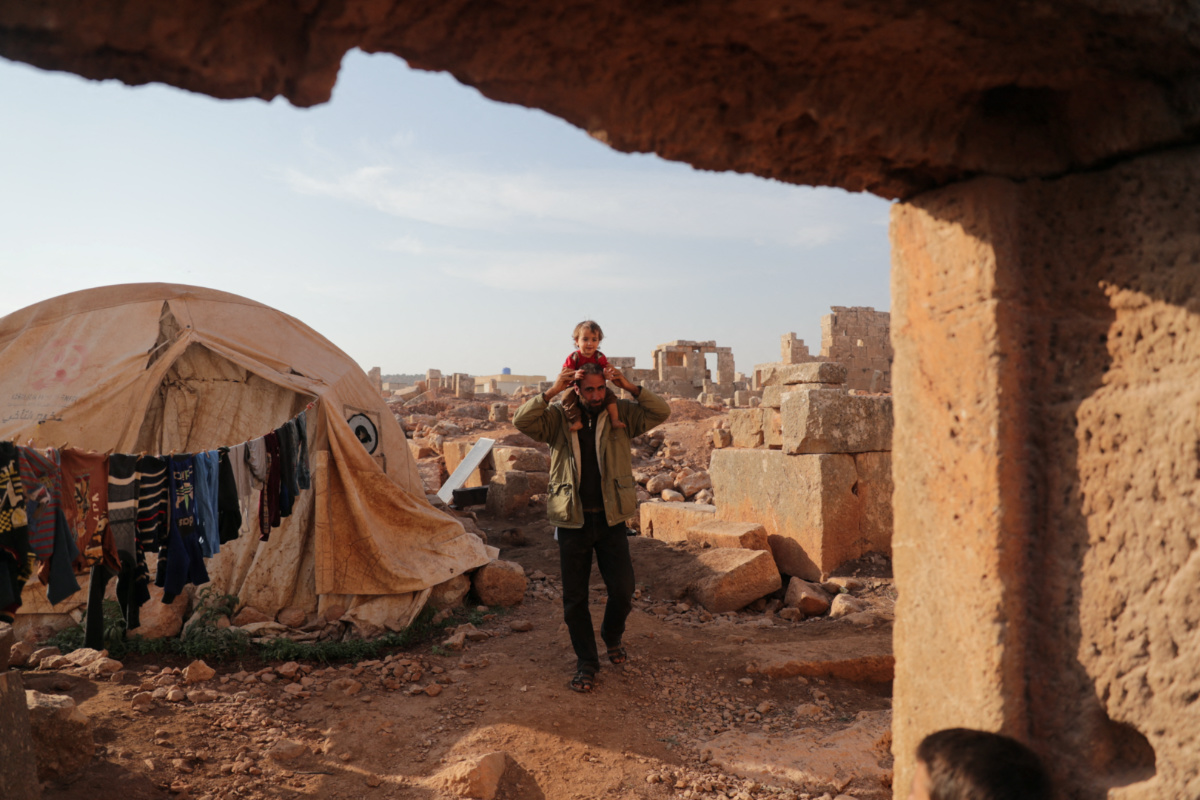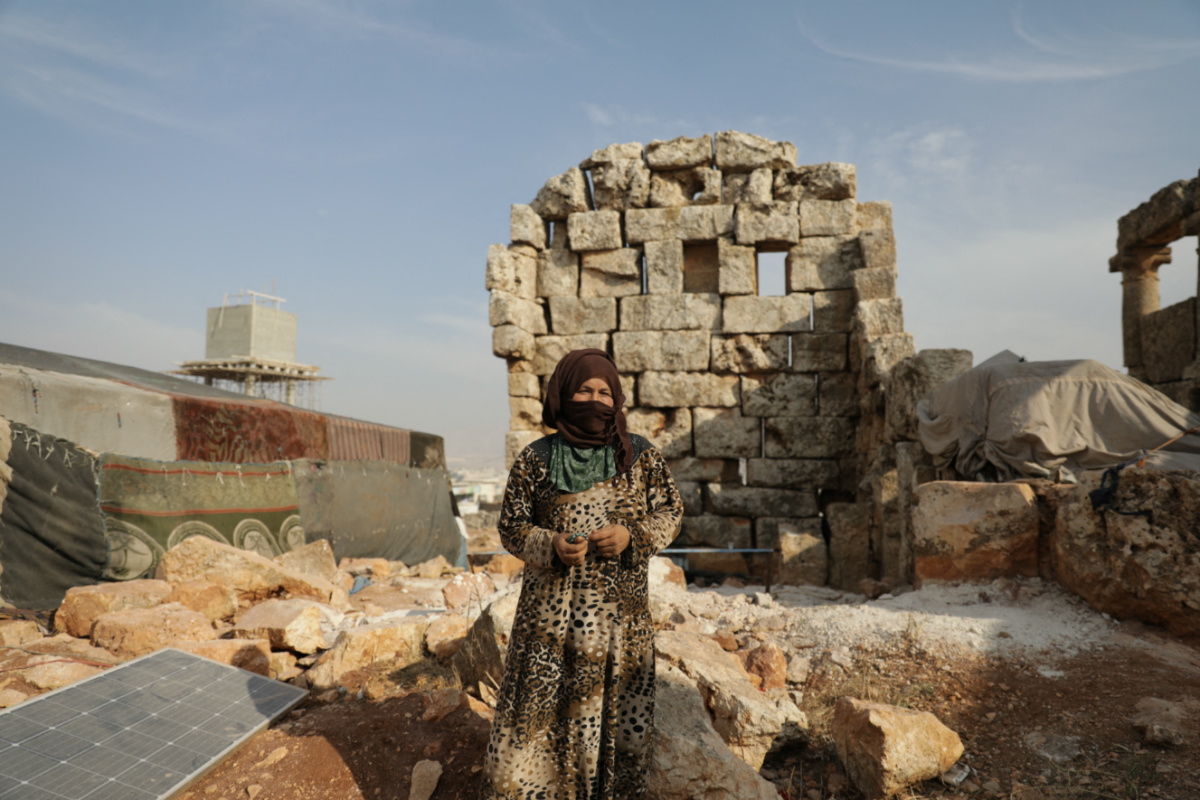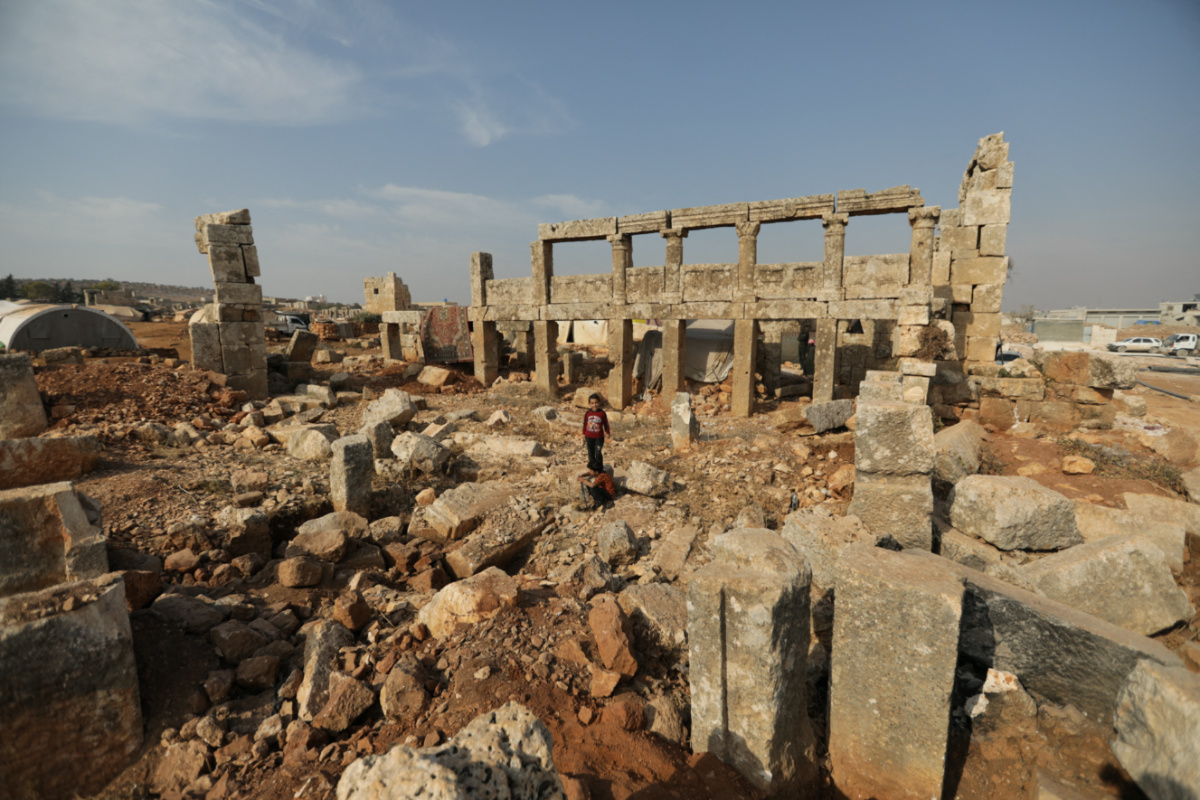
KHALIL ASHAWI, of Reuters, reports from among some of those displaced in Syria…
Idlib Province, Syria
Reuters
Mohamad Othman remembers going on school trips to ancient archaeological sites in Syria, never imagining one of them would become his home.
Othman and his family have been living in a tent amidst ancient ruins at Sarjableh near the Turkish border since fleeing for their lives some two-and-a-half years ago during a government offensive in north-western Syria.

Mohamad Othman, 30, carries his child on his head at the archaeological site of Sarjableh, in the northern countryside of Idlib, Syria, on 17th November. PICTURE: Reuters/Khalil Ashawi
Rocks gathered from the site anchor down their tent, one of several dozen that are sheltering families who have fled their homes during the decade-long Syrian war.
Their clothes hang to dry on two lines strung between the tent and an ancient stone portico. Their children clamber over the rocks and balance on walls in this unusual if dangerous playground.
“In the summer, we face scorpions, snakes and dust, and all the pressures of life, and in winter the cold. The situation is desperate. There are no health services,” Othman, 30, said.
He said shelling forced them to flee their village near Maarat al-Numan, an area close to the frontline between government and rebel forces that has been pummelled in various bouts of conflict during Syria’s decade-long conflict.

Louay Abu Al-Majd, 11, stands atop ruins at the UNESCO World Heritage Site of Babisqa, in the northern countryside of Idlib, Syria, on 29th November. Among the 80 or so families living at the site, it is known as ‘Ruins camp’. PICTURE: Reuters/Khalil Ashawi
A father of four, he struggles to make an income, depending on seasonal work such as olive picking and any other jobs he can pick up. When there is no work, he is forced to go into debt to provide the basics. His children do not go to school.
“When the last bombardment and attack began, we left to come to here. We did not find a place to take shelter, so we lived here among the ruins.”
– Mohamad Othman.
“When the last bombardment and attack began, we left to come to here,” Othman said. “We did not find a place to take shelter, so we lived here among the ruins.”
The site, an early Christian settlement with ruins dating to the 5th century, has been popular with the displaced because they do not have to pay to stay there, unlike other areas where landowners charge rent.
“Everyone here used to have land that we would farm and we had livelihoods in our villages and did not need anyone. But our fate was to be displaced,” Othman said.
“We did not leave our land by our own free will to come to an area that has been uninhabited for thousands of years.”

Aida al-Hassan, 44, poses for a photo amongst ruins at the archaeological site of Sarjableh, in the northern countryside of Idlib, Syria, on 17th November. Al-Hassan was displaced from the Al-Ghab Plain in the Hama countryside 10 years ago and now lives with her family of 12 in the archaeological site. “I moved more than once until I settled in the ruins, here there is no rent, but insects and snakes are many” she said. PICTURE: Reuters/Khalil Ashawi
There are some 2.8 million displaced people in north-western Syria, with 1.7 million of them in sites for the internally displaced, the United Nations says.
Not far from Sarjableh, in another corner of the north-western province of Idlib, the ancient site of Babisqa is also providing shelter for those bombed out of their homes.
We rely on our readers to fund Sight's work - become a financial supporter today!
For more information, head to our Subscriber's page.
In an earlier phase of the war, rebels used the site as a base, operating from ancients caves hewn from the rock where wiring installed by the opposition fighters can still be seen.
Among the 80 or so families living at the site, it is known as ‘Kharrab camp’, or ‘Ruins camp’.
Livestock farmers, they took their sheep and goats with them when they fled into rebel-held areas from territory now under Syrian government control. Today, sheep and goats feed amid the ancient stones, with poultry pecking on the ground.

A child stands in the middle of ruins of an ancient building in the archaeological site of Sarjableh, in the northern countryside of Idlib, Syria, on 17th November. Sarjableh has become a home to more than 50 families displaced from the southern countryside of Idlib during the war. PICTURE: Reuters/Khalil Ashawi
Some people have used stones from the ruins to build their shelters, some of which are equipped with small solar panels propped up outside. An antennae strapped to the side of one of the homes provides internet.
Mahmoud Abu Khalifa, a 35-year-old father of seven, stores family possessions and animal feed in an ancient cave hewn out of the rock. He keeps his sheep in a pen amidst the stones.
“Before being displaced, we had agricultural land and farmed crops and lived from them and everything was great and we had these animals,” he said.
Today “the children live in the ruins and mud,” he said. “The situation is very desperate.”
“Our one demand is to return to our villages.”





